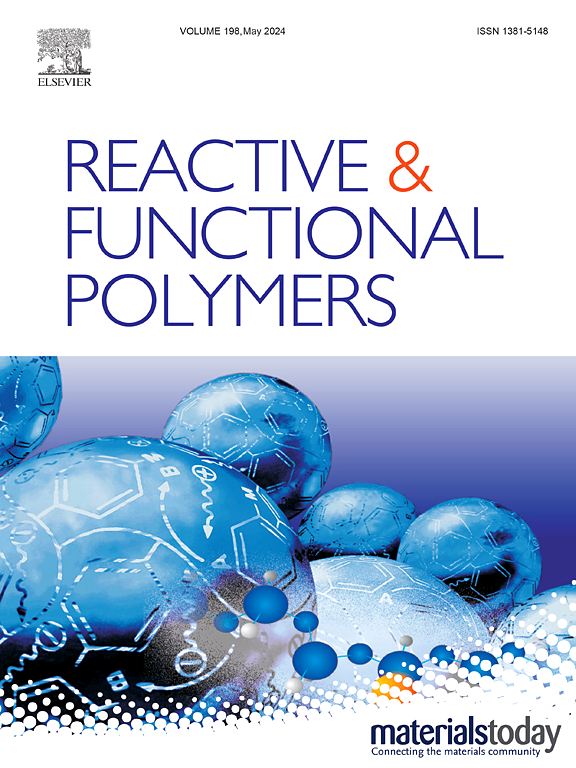Application of aluminum diethyl hypophosphite, iron-based metal organic framework-NH2-MIL-53(Fe), and expandable graphite complexes as flame retardants for high-density polyethylene
IF 4.5
3区 工程技术
Q1 CHEMISTRY, APPLIED
引用次数: 0
Abstract
High-density polyethylene (HDPE) composites are made by melt blending HDPE with MIL-53(Fe), amino-functionalized NH2-MIL-53(Fe), aluminum diethyl hypophosphite (ADP), and expandable graphite (EG). The experimental disclosed showed that the aminated NH2-MIL-53(Fe) could improve residual carbon quality and exert a better flame retardant effect than MIL-53(Fe). When 25 wt% of EG/ADP/NH2-MIL-53(Fe) was added and the ratio of EG to ADP/ NH2-MIL-53(Fe) was 1:1, HDPE/EG/ADP/NH2-MIL-53(Fe) composites could achieve a limiting oxygen index of 31.1 %, which passed UL-94 testing and was rated V-0. This results in a considerable improvement in flame retardant efficiency as the peak heat release rate was lowered by 83.4 % and the total heat release was reduced by 35.8 % when compared to the pure HDPE material. Therefore, NH2-MIL-53(Fe)/ADP/EG synergistic flame retardancy can lead to high flame retardancy efficiency in HDPE. This provided a new potential direction for the preparation of highly efficient flame retardants.
二乙基次磷酸铝、铁基金属有机框架-NH2-MIL-53(Fe)和可膨胀石墨复合物作为高密度聚乙烯阻燃剂的应用
将高密度聚乙烯(HDPE)与 MIL-53(Fe)、氨基官能化 NH2-MIL-53(Fe)、二乙基次磷酸铝(ADP)和可膨胀石墨(EG)熔融共混制成高密度聚乙烯(HDPE)复合材料。实验结果表明,与 MIL-53(Fe)相比,氨基化 NH2-MIL-53(Fe)能改善残炭质量,发挥更好的阻燃效果。当 EG/ADP/NH2-MIL-53(Fe) 的添加量为 25 wt%,EG 与 ADP/ NH2-MIL-53(Fe) 的比例为 1:1 时,高密度聚乙烯/EG/ADP/NH2-MIL-53(Fe) 复合材料的极限氧指数可达 31.1%,通过了 UL-94 测试,评级为 V-0。与纯高密度聚乙烯材料相比,峰值热释放率降低了 83.4%,总热释放率降低了 35.8%,从而大大提高了阻燃效率。因此,NH2-MIL-53(Fe)/ADP/EG 的协同阻燃作用可提高高密度聚乙烯的阻燃效率。这为制备高效阻燃剂提供了一个新的潜在方向。
本文章由计算机程序翻译,如有差异,请以英文原文为准。
求助全文
约1分钟内获得全文
求助全文
来源期刊

Reactive & Functional Polymers
工程技术-高分子科学
CiteScore
8.90
自引率
5.90%
发文量
259
审稿时长
27 days
期刊介绍:
Reactive & Functional Polymers provides a forum to disseminate original ideas, concepts and developments in the science and technology of polymers with functional groups, which impart specific chemical reactivity or physical, chemical, structural, biological, and pharmacological functionality. The scope covers organic polymers, acting for instance as reagents, catalysts, templates, ion-exchangers, selective sorbents, chelating or antimicrobial agents, drug carriers, sensors, membranes, and hydrogels. This also includes reactive cross-linkable prepolymers and high-performance thermosetting polymers, natural or degradable polymers, conducting polymers, and porous polymers.
Original research articles must contain thorough molecular and material characterization data on synthesis of the above polymers in combination with their applications. Applications include but are not limited to catalysis, water or effluent treatment, separations and recovery, electronics and information storage, energy conversion, encapsulation, or adhesion.
 求助内容:
求助内容: 应助结果提醒方式:
应助结果提醒方式:


